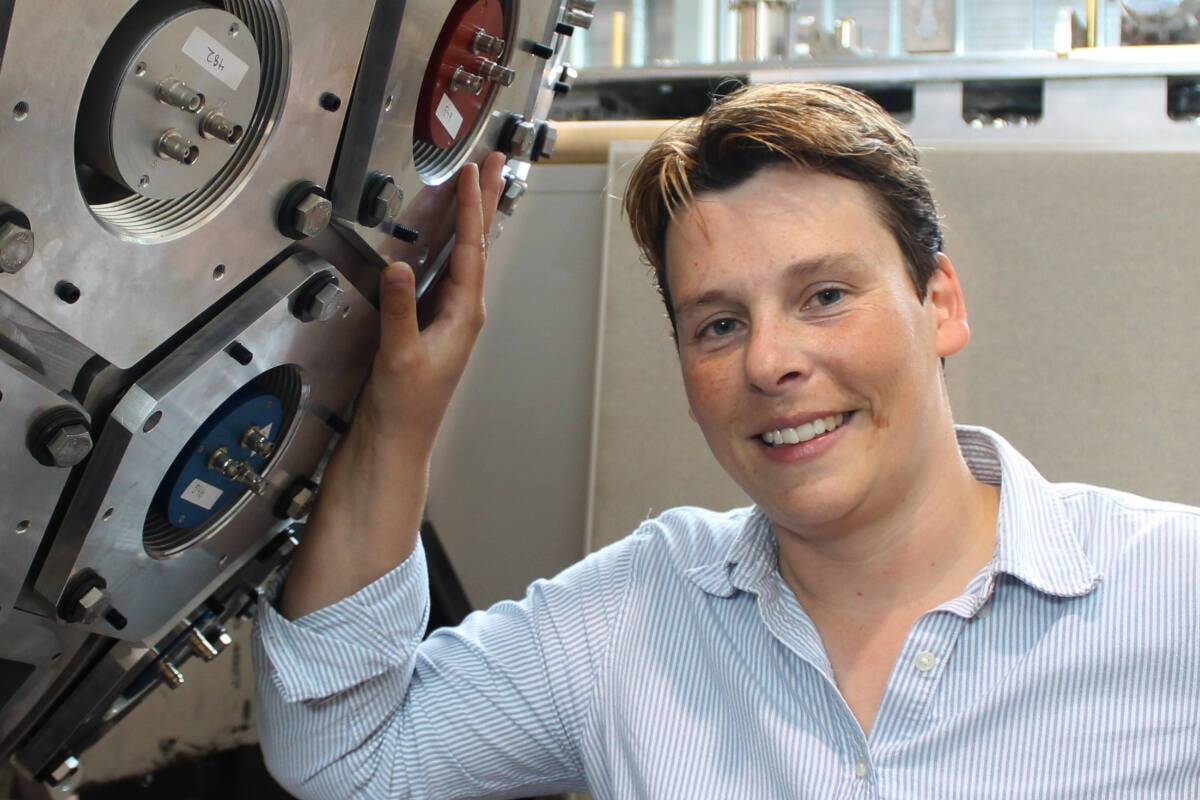It’s been 13.8 billion years since the ‘big bang’ and in that time hundreds of generations of stars have been born and died, and the elements formed by that process have, in turn, created everything in the physical universe.
Iris Dillmann, nuclear astrophysicist and senior research scientist at Tri-University Meson Facility since 2013 and adjunct professor at the University of Victoria, will explain for Nanaimo Astronomy Society members what happens inside stars that create the elements in our universe and how researchers at TRIUMF, Canada’s particle accelerator centre in Vancouver, are investigating to better understand how the building blocks of our universe came about.
Dillmann describes herself in her bio as a “lunar-tic” who, since childhood, has been fascinated with the moon, planets, stars and NASA’s space shuttle program. In 2008 she even participated in the European Space Agency’s astronaut selection program to try to realize her dream of becoming an astronaut. When that didn’t happen, she focused on her academic career to study the creation of elements in the stars.
At TRIUMF, Dillmann works with other researchers to try to reproduce processes that happen within the interior of stars to form elements.
“For this we have a particle accelerator, here at TRIUMF, we have a whole facility where we can produce radioactive short-lived isotopes, that decay in just a second or so, and try to do the same kind of [conditions] that happen in the interior of stars, but we do them in the lab,” Dillmann said. “For this we have various experiment setups to investigate different aspects of all these reactions that happen in the star.”
Dillmann said TRIUMF has several different facilities on site that have different detection setups to measure particle mass, reactions that happen in star interiors, and radioactive material decay.
“So we look with different eyes or different glasses at the same material and try to extract physical quantities from there, which then in turn, we give to our theoretical friends – our physical modellers,” she said. “For example, we have in the University of Victoria some of our colleagues working. We give our experimental data to them and they put it into astrophysical models, they let the star explode in the computer and then they see what the difference is between the data they had before – many are theoretical data – and include our experimental data.”
Dillmann said she’ll show what the TRIUMF facility looks like and how it functions and then focus on the work she is conducting there, particularly the what happens in our nearest star, the sun and how it produces carbon.
“Without this process we wouldn’t be sitting here. We are all carbon-based objects,” she said. “All of these elements that are in our bodies are coming from stars, so I will flash through this and try to give people an overview.”
Dillmann makes her presentation, Forging Elements in the Stars: Nuclear Astrophysics in a Nutshell, via Zoom to an in-person-only audience at Nanaimo Astronomy Society’s monthly meeting at Beban Park Social Centre on Thursday, Nov. 23, from 7-8 p.m. To learn more, visit www.nanaimoastronomy.com.
READ ALSO: Nanaimo Astronomy Society will hear about Canada’s long-range astronomy plans
